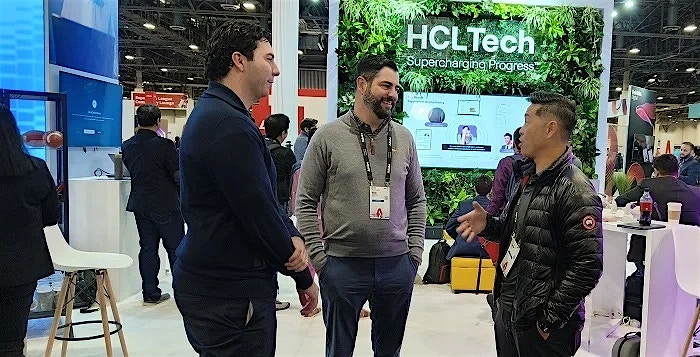Scaling innovation is key to enabling digital experience, as it allows companies to create new products and services that meet customer needs, at speed. This can include new technologies, new processes and new experiences.
The question is how organizations can move from macro to micro innovation at scale to enable a digital experience, while removing technical debt—which has been called the “dark matter” hanging over CIOs.
Defining innovation
Every organization strives for innovation. It’s viewed as the catalyst that will spur business growth and bring new products, services and experiences to customers, while delivering competitive advantage. But, what does innovation actually mean?
Lester Lam, Executive Vice President and Global Leader for Consulting at HCLTech, believes it’s a loaded term.
“When people think about innovation, they think about massive changes, which is exemplified by the impact of disruptors like Uber and Airbnb,” he says, speaking at HCLTech’s booth at Adobe Summit in Las Vegas.
In fact, innovation comes in many different forms. It’s not just the macro innovations. To truly scale transformation, organizations need to move away from this big bang way of thinking and reframe what they think of as innovation.
The ability to scale innovation on a smaller, but much broader level requires a shift in understanding. Organizations need to embrace what Lam calls “micro innovation”.
Nick Sarkisian, Vice President – Digital Business at HCLTech agrees.
He says: “To achieve the desired state of scaled micro innovation, organizations should set up a set of principles or systems that enable a broader base of business and technology users in an enterprise to innovate on their processes and to improve them incrementally over time.”
Having a system in place that gives people time to innovate, as part of the overall work process, is crucial.
“Providing a framework that allows and incentivizes employees to implement changes and test different ideas to prove there is a return on investment (ROI) enables scaled innovation in a meaningful way,” adds Sarkisian.
HCLTech’s unique employee-led cultural initiative, Ideapreneurship, is a good example of this in action.
Ideapreneurship is based on the fundamental belief of inverting the organizational pyramid and engaging, enabling and empowering everyone at all levels within the organization. Employees are challenged to think, look within and look into the future, to come up with solutions for operational and business challenges across several different practices, including customer and business innovation.
The micro innovation framework
According to Lam, there are three core components that make up a framework to support micro innovation at scale.
Governance is the first aspect. “There must be a set of repeatable rules that people can follow as part of a workflow process,” he says.
The second is the need for technologies and tools to accelerate thinking. “This isn’t a ‘platform technology’ that governs the way you work, but a set of reusable tools and thinking that can be applied to all the different products and services,” continues Lam.
The third and arguably most important component is to instill a mindset shift that promotes a macro to micro innovation culture.
“To effectively embed these, it’s important to change expectations and the metrics used to define success when it comes to innovation,” adds Lam.
Avoiding the dark matter
Before embarking on any innovation, whether large or incremental, it’s important to determine the readiness of an organization.
If an organization isn’t ready to democratize innovation at scale, then Lam recommends setting up an innovation team that sits outside of the business and technology functions.
“In this team, the group of practitioners will focus on all the different lines of business, the processes and the products, and translate those into potential innovations that then get carried out by the technology teams. As this matures, the aim should be to enable those agile development teams to own the innovations,” he explains.
Implementing this kind of change, which shifts the operating model brings up concerns about technical debt, or ‘dark matter’.
The process of innovation brings its own technical debt, because as organizations innovate and build new capabilities, this changes interaction models and experiences, which accelerates the need to refactor and clean up old code.
To overcome the challenge of technical debt when driving innovation initiatives, Lam suggests that organizations address it as part of the workflow or backlog.
“It’s about changing the expectations of the team, so that they’re constantly innovating and cleaning up legacy technology to avoid technical debt,” says Lam.
Innovating in the partner ecosystem
In pursuit of innovation at scale without technical debt, embracing the partner ecosystem is essential.
“The partner ecosystem provides the tools that enable organizations to feel comfortable and confident when innovating,” says Sarkisian.
He adds: “Getting partners like HCLTech involved ensures that the innovations an organization comes up with can be implemented. This is important factor in getting people to buy-in and participate in a culture where innovation is celebrated, incentivized and delivered.”





